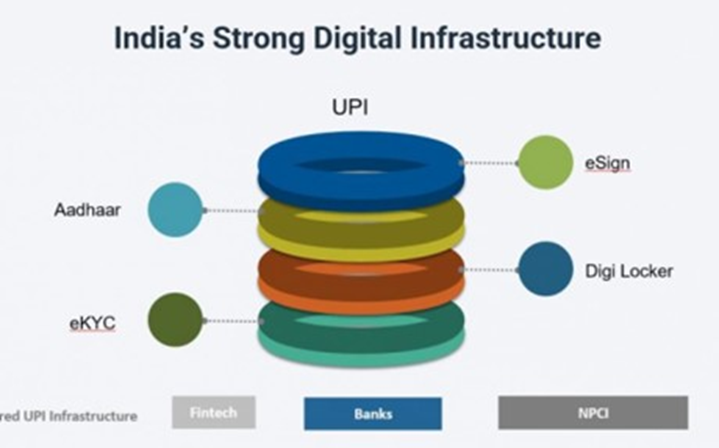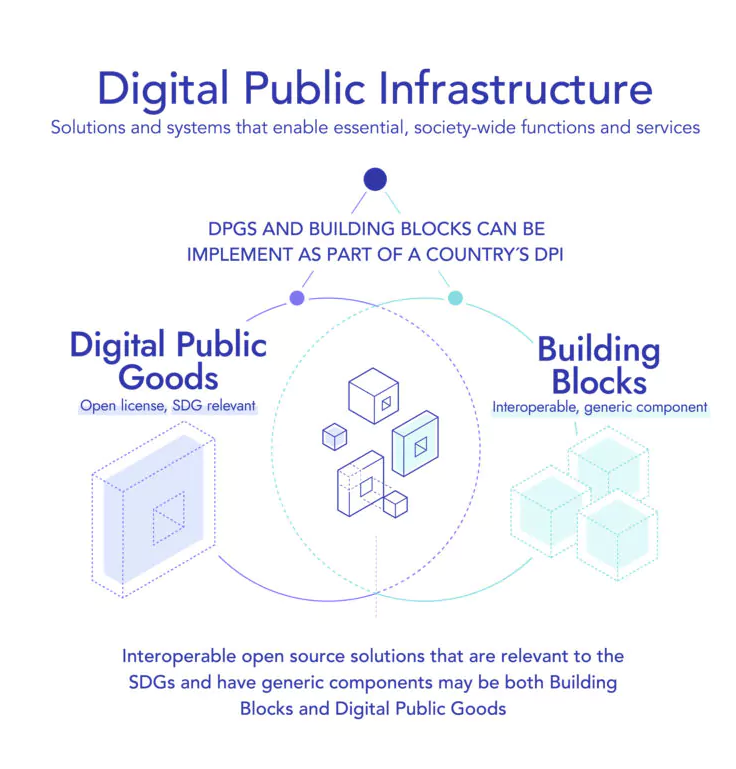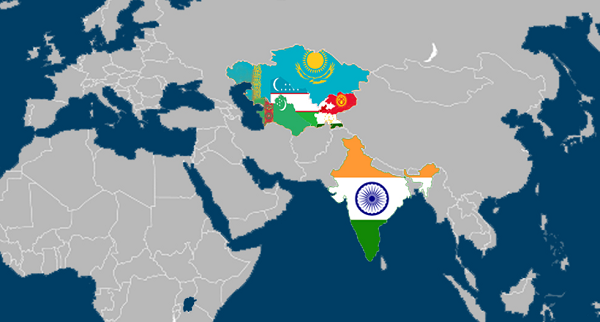- Courses
- GS Full Course 1 Year
- GS Full Course 2 Year
- GS Full Course 3 Year
- GS Full Course Till Selection
- MEP (Mains Enrichment Programme) Data, Facts
- Essay Target – 150+ Marks
- Online Program
- GS Recorded Course
- NCERT- First Ladder
- Polity
- Geography
- Economy
- Ancient, Medieval and Art & Culture AMAC
- Modern India, Post Independence & World History
- Environment
- Governance
- Science & Technology
- International Relations and Internal Security
- Disaster Management
- Ethics
- Current Affairs
- Indian Society and Social Issue
- CSAT
- 5 LAYERED ARJUNA Mentorship
- Public Administration Optional
- ABOUT US
- OUR TOPPERS
- TEST SERIES
- FREE STUDY MATERIAL
- VIDEOS
- CONTACT US
India’s Digital Public Infrastructure
India’s Digital Public Infrastructure

During its G20 presidency, India highlighted Digital Public Infrastructure (DPI) as a pivotal element for fostering inclusive and sustainable development through technological innovation. DPI’s defining features—openness, interoperability, and scalability—emphasize its role as a crucial enabler for enhancing public and private service delivery.
What is Digital Public Infrastructure (DPI)?
About DPI: DPI encompasses the foundational digital systems and services provided by the public sector to support and enhance the functioning of a digital economy and society. It includes:
- Digital Identity Systems: Platforms for verifying and managing online identities, such as Aadhaar.
- Digital Payment Systems: Infrastructure supporting secure financial transactions, including digital wallets and payment gateways.
- Public Digital Services: Government-provided online services like e-governance portals and digital health platforms.
- Data Infrastructure: Systems for secure data storage, management, and sharing, ensuring data sovereignty and privacy, such as Digilocker.
- Cybersecurity Frameworks: Measures to protect digital assets and personal information from cyber threats, e.g., Information Security Management System (ISMS).
- Broadband and Connectivity: Infrastructure to ensure equitable access to high-speed internet.
Categories:
- Foundational DPIs: Initiatives establishing resilient digital frameworks, including Aadhaar, UPI, and Data Empowerment and Protection Architecture (DEPA).
- Sectoral DPIs: Specialized services for specific sectors, such as the Ayushman Bharat Digital Mission.
Impact of DPIs
- Vaccine Administration: Aadhaar-based authentication facilitated the administration of over 2.2 billion Covid-19 vaccines via the CoWIN platform.
- Transaction Volume: Over 1.3 billion Aadhaar enrolments and more than 10 billion UPI transactions monthly highlight DPI’s transformative impact.
- Governance Improvement: DPI has enhanced governance in sectors like credit, e-commerce, education, health, and urban management.

Nasscom’s Observations:
- Economic Growth: Digital public infrastructure could help India achieve a USD 8 trillion economy by 2030.
- GDP Contribution: The economic value of DPI is expected to rise to 2.9%-4.2% of GDP by 2030, up from 0.9% in 2022.
- Sectoral Impact: The Ayushman Bharat Digital Mission is anticipated to significantly boost digital health infrastructure, while the Open Network for Digital Commerce (ONDC) could enhance retail spending.
Challenges Related to India’s DPI
- Data Privacy and Security Concerns: Extensive data collection raises significant concerns about privacy, security, and potential misuse of information.
- Digital Divide: Despite progress, internet penetration is at 52% as of 2024, leaving a substantial portion of the population without access to digital infrastructure.
- Regulatory Gaps and Fragmentation: Existing regulatory frameworks are inadequate for new challenges such as platform monopolies and cross-border data flows. For example, the Reserve Bank of India's mandate for local payment data storage complicates compliance for international providers.
- Cybersecurity Threats: Increased reliance on digital infrastructure exposes India to cyberattacks, ransomware, and state-sponsored hacking. Maharashtra, for example, faces 42% of all ransomware attacks in India.
- Monopolization of Digital Infrastructure: Dominance by entities like the National Payments Corporation of India (NPCI) may limit competition and innovation.
- Sustainability of Digital Infrastructure: Ensuring long-term financial viability, technical upkeep, and scalability of DPIs is a persistent challenge.
Steps to Increase Resilience of India’s DPI
- Strengthening Data Protection and Privacy Frameworks: Implement comprehensive data protection laws with stringent norms for data collection, storage, usage, and breach recourse.
- Bridging the Digital Divide: Expand digital infrastructure and literacy initiatives to ensure equitable access across all societal segments.
- Developing Adaptive Regulatory Mechanisms: Create dynamic and flexible regulatory frameworks to address emerging issues such as platform monopolies and data governance.
- Enhancing Cybersecurity Measures: Institutionalize regular audits, simulations, and real-time monitoring to mitigate cyber risks.
- Fostering Public-Private Partnerships (PPPs): Collaborate with the private sector to leverage technical expertise, drive innovation, and scale digital services.
- Need for Soft Law: Use soft law instruments to promote best practices and manage innovation and regulation effectively, balancing legal and non-legal approaches.
Key Developments in India's Digital Public Infrastructure
-
Unified Payments Interface (UPI)
-
Aadhaar Ecosystem
-
Open Network for Digital Commerce (ONDC)
-
Account Aggregator Framework
-
Ayushman Bharat Digital Mission
-
eSanjeevani
-
Digital India BHASHINI
-
Digital Rupee
-
Government e-Marketplace (GeM)
Conclusion:
India’s G20 presidency underscored the transformative potential of Digital Public Infrastructure (DPI) as a key driver of inclusive and sustainable development. To further enhance DPI resilience, India must address challenges related to data protection, the digital divide, regulatory gaps, and cybersecurity threats. By adopting robust frameworks, expanding access, and fostering innovation through public-private partnerships, India can strengthen its digital infrastructure and ensure it remains a cornerstone of its future economic and social development.




